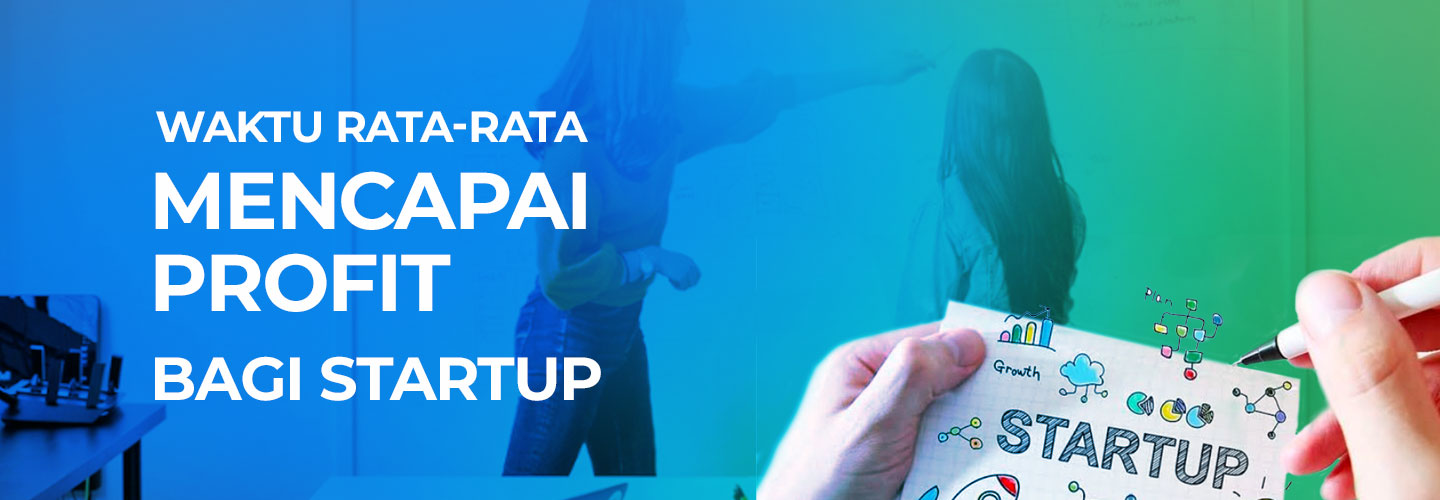How Much Time Needed for Startups to Make Profits?

One of the goals in starting a business is to get profit or profitability. Profits can help a business to attract investors, grow the business, and also acquire businesses. This is one of the goals in running a start-up. The time needed to achieve profits will differ from one startup to another.
Factors that influence the achievement of profits include the nature of the business itself, the sector it runs, as well as initial capital and costs. As an entrepreneur, you can generate income from a company even when the company is losing money on paper, while investors can profit if they are paid back at a fixed rate of interest on their investment.
Profit vs Growth
When a business hasn't made a profit, it doesn't mean your company isn't growing or has poor performance. In reality, some well-known startups don't turn a profit and some take years to get a return on the business they run.
For example, Facebook, which was only profitable in 2009, which was five years after it was founded, or Amazon, which was founded in 1994, only made profits in 2001. Both companies focus on resources for development or growth in new markets.
However, in recent years there has been a shift in thinking or a growth-at-all-cost mentality towards company growth in new start-ups. It was then that investors encouraged start-ups to focus on creating sustainable business models and making profits rather than focusing on company development or growth. Startup founders need to consider the benefits and business model at the start of the planning rather than the growth of the business itself.
How to Measure Business Profitability
There are three ways to measure profitability, namely for the board of directors, investors, and the business as a whole. For example, an entrepreneur who leaves his regular job to start a business. In the first year the business generates a profit that is more than the entrepreneur's wages when holding a steady job.
Overall, the business is not showing a profit because salaries are included as business expenses. However, the businessman earned a large profit from the business. Likewise payments to investors can be structured so that they continue to earn interest even when the business officially breaks even or makes a loss.
Identifying Company Profits
A company's profitability is the money that is left after all expenses have been taken into account, including the salaries of the board of directors, staff, and payments to investors. If these profits are reinvested in additional marketing or product development, they are written off from the income statement.
That is, the company is very successful and growing rapidly, but cannot show profit on paper or even a loss if investment capital is still flowing. When a company's profits are invested as cash or liquid assets for the company's future use, the company can start to show a profit.
What are the Profits?
Beginning entrepreneurs must distinguish between so-called ramen profitability and the actual profitability of the company. Ramen profitability is sufficient cash flow so that the founders of the company can maintain a minimal lifestyle as quickly as possible without needing to look for a job or side income.
Can a startup that requires very little capital to launch be able to achieve ramen profitability in a short time. However, it may take longer for founders to earn a decent salary while also leaving enough cash to show that the business is making a profit.
For this reason, consider your goals when designing your ledger sheets. Your business only needs to demonstrate formal profit if there is a genuine business interest in doing so. Investors may be easier to find if you only want to make paper profits.
If your goal is to live off the results of your business while enjoying the added benefits of being your own boss, your business may not need to show a profit. This can also be beneficial from a tax perspective, minimizing the taxes your company pays in the long run.
In the end, there is no specific benchmark for how long it takes for a startup to achieve a profit. It doesn't matter what type of business or company you run, in an effort to make a profit, you have to build a sustainable business model, cut fixed costs, and invest in areas that can provide benefits.